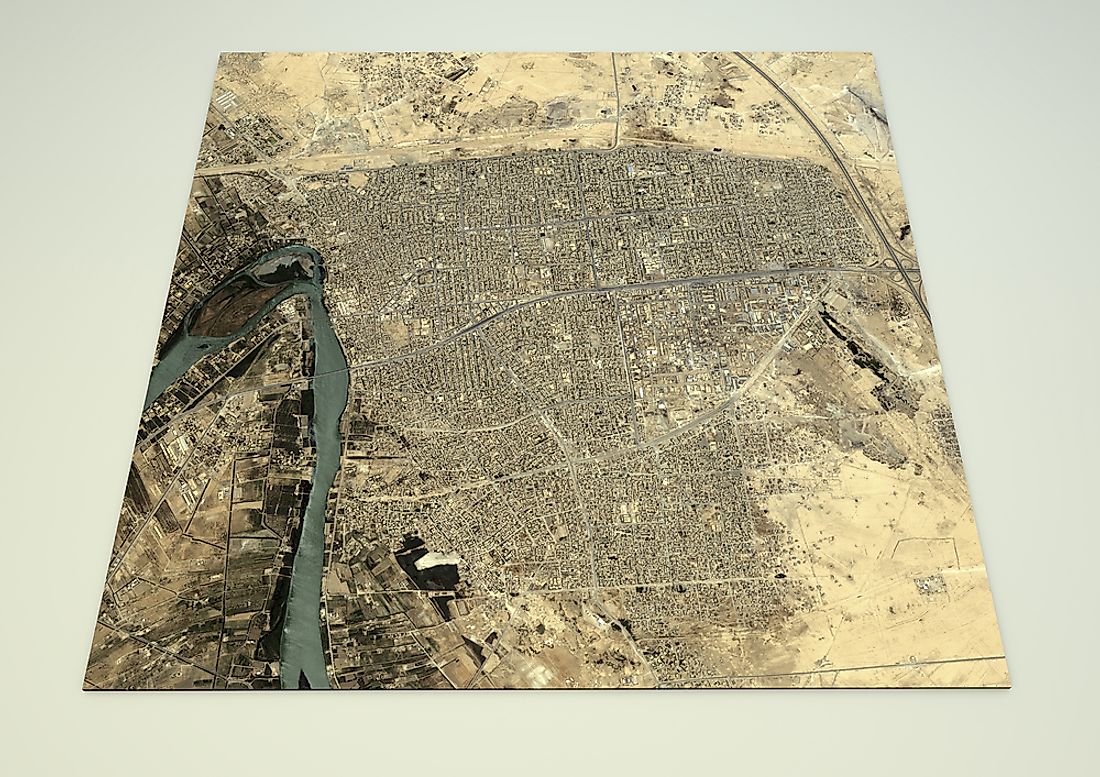Second Battle Of Fallujah, 2004 (Iraq War)

5. Background
Fallujah is located about 40 miles east of Baghdad, close to the ‘V-Ring’ of what was called the ‘Sunni Triangle’. Despite the city being densely populated and strategically important, it was relatively untouched by the Coalition forces in their drive to Baghdad. However, by 2004, the city had become a haven for foreign fighters, insurgents, smugglers, and criminals alike. They started killing American troops to avenge the death of insurgents in other cities. Most historians consider the ghastly killing and hanging of Americans in March of 2004 as the most strongly motivating precursors of the Battles of Fallujah.
4. MAKEUP OF THE FORCES
The fierce Second Battle of Fallujah was fought between a U.S.-led Coalition and the insurgents. The coalition forces were led by Lieutenant General John F. Sattler and Major General Richard F. Natonski who had about 15,000 men under their command, including American, Biritsh, and those Iraqi soldiers loyal to the new U.S.-supported government. The insurgents, with the support of al-Qaeda in Iraq, were led by Omar Hussein Hadid and Abdullah al-Janabi who had about 5,000 under their command. The coalition troops were grouped into two Combat Teams: Regimental Combat Team 1 (RCT 1) and the Regimental Combat Team 7 (RCT 7). Team 1 was comprised by 3rd Battalion/5th Marines, 3rd Battalion/1st Marines, 23 Seabees, the Naval Mobile Construction Battalion 4, and the U.S. Army's 2nd Battalion/7th Cavalry. Team 7 was comprised by the U.S. Army's 2nd Battalion/2nd Infantry, 1st Battalion/3rd Marines, 1st Battalion/8th Marines, and the 2nd Battalion/12th Cavalry. The coalition troops were assisted by 2,000 Iraqi troops, U.S. Army artillery battalions, aircraft, and U.S. Marine. Fallujah was defended by more than 500 proficient and around 3,000 “part-time” insurgents. These ‘Mujahedeen’ fighters and insurgents fortified the city in anticipation of attack. They dug trenches and tunnels, prepared spider holes, and used a wide variety of Improvised Explosive Devices (IEDs) to prevent the coalition troops from entering their city. They also filled empty dark building with gasoline and propane bottles, were wired to trigger a detonation whenever Coalition troops entered the buildings.
3. DESCRIPTION
Before the attack started, the area was cordoned off, and civilians were encouraged to leave the city. It is estimated that over 70 percent of its civilians departed from Fallujah before the battle even started. The insurgents were expecting the coalition forces to attack from the south and southeast, but the coalition forces changed their tactics. The RCT 1 assaulted the city from the north, while RCT 7 attacked the eastern part of the city. The combat teams took control of two major bridges to prevent enemy retreat from the northern and eastern part of the city. A similar mission was undertaken by the British Black Watch Regiment to block off the east and south sides of Fallujah. On the 8th of November, RCT 1 and RCT 7 commenced the attack on the city with the help of artillery and air strikes. Using the Army’s armored support, the coalition troops were able to effectively attack key enemy positions, including a main train station. By the evening of November 9th , the coalition troops were able to take control of the strategically significant Highway 10, which bisected the city. By the end of the 10th of November, the coalition forces had taken control of 70 percent of the city. The RCT 1 moved through the Nazal, Jebail, and Resala neighborhoods while RCT 7 continued to attack the industrial districts to the southeast. By the end of November 13th , most of the city was under the control of coalition forces. However, the fighting continued for several more days, as Coalition forces moved house-to- house to eliminate the remnants of the insurgent resistance.
2. OUTCOMES
The process of clearing the city was slow, as many houses were booby-trapped. To reduce casualties, the soldiers entered the buildings only after tanks had rammed holes in their walls. On November 16th , US officials declared that Fallujah was cleared of insurgents. More than 100 coalition soldiers were killed, and 613 soldiers were wounded during the operation. However, there is limited information on the number of insurgent casualties. Some estimates place the number of insurgent killed during the operation at about 1,200, while other claim that more than 2,000 insurgents were killed. The Red Cross estimated that about 800 civilians were killed during the offensive as well.
1. Historical Significance and Legacy
The Second Battle of Fallujah, alternatively code-named Operation Phantom Fury and Operation Al-Fajr, was one of the bloodiest battles in the entire Iraq War. This Second Battle of Fallujah is notable for being the first major battle of the Iraq War that was fought solely against the Iraqi insurgents. Earlier in the conflict, most battles had been fought against the former Iraqi Government, which was deposed of in 2003. Even though Abu Musab Al-Zarqawi was not captured during the operation, the battle severely damaged the momentum of the insurgency. Tactics that were developed in the battles of Fallujah were used on larger scales to capture Ramada and other surrounding areas afterward. After the Battle of Fallujah, the insurgents avoided open battles, but the number of attacks on coalition troops began to rise more. Four years after the bitter fighting, the city was turned over to Iraqi Forces and the Iraqi Provincial Authority. Unfortunately, even today, more than a decade later, much of Iraq and the Middle East as a whole is still beset by violence.











